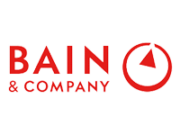



Slide 1
Blog
New Research Reveals More about the Skill-First ROI: Unveiling the Financial Impact on Businesses
Slide 1
Article
Grads of Life Founder and LinkedIn Executive Make a Stronger Business Case for a Skills-First Future
Slide 1
Slide 1
Webinar | LinkedIn Live
Revolutionizing Talent: Merck's Journey Beyond Degrees – A Live Conversation With Grads of Life
Grads of Life Insights

Blog
Understanding the New Frontier of Human Capital Management: Skills-First Talent Management
Grads of Life and Morningstar Sustainalytics, a leading ESG research and analytics firm, invite corporate and investment leaders to discuss the business case for skills-first human capital management.
February 2, 2024

Case Studies
Unlocking Economic Opportunity: Insights From Top-Ranked Companies on the American Opportunity Index
With the support of the Schultz Family Foundation, Grads of Life took a closer look at how employers like Delta and Verizon are moving the needle on economic opportunity and mobility.
November 29, 2023

Blog
The Transformative Power of Sponsorships
When it comes to changing the corporate landscape and elevating historically excluded workers, sponsorships are one of the strongest levers business leaders and people managers can pull.
October 23, 2023
Strategic Partners
Our Clients & Supporters Include:
Get the Latest
Subscribe to our newsletter for updates on new content, tools, resources, upcoming events and more.
















